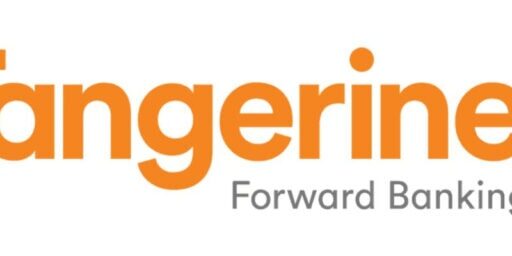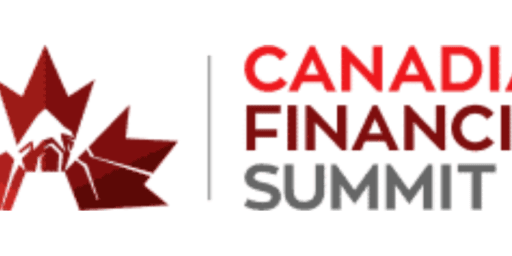Protect Your Savings: CDIC and CIPF Explained
Since the inception of this blog, I’ve received numerous emails from readers asking where to put larger deposits. Most know about CDIC (Canada Deposit Insurance Corporation) and how it protects most accounts up to $100,000, but what about amounts greater than $100,000? What do you do then? What exactly happens to your money if a bank or brokerage goes bankrupt?
Since I haven’t written about them yet, lets take a look at the two major account insurances in Canada, CDIC and CPIF.
Canada Deposit Insurance Corporation (CDIC)
CDIC insurance insures bank accounts up to $100,000 in the case that the institution declares bankruptcy. This includes chequing accounts, savings accounts along with GIC’s and savings accounts held within an RRSP.
RRSP and savings accounts are considered separate, which results in more insurance coverage. If you have a spouse, then joint accounts are considered separate from single accounts. These accounts must be in Canadian dollars and held by a CDIC member institution.
An important caveat to note is that CDIC does not include accounts that hold stocks and mutual funds.
Examples:
- $100k Non-RRSP savings account and $100k RRSP GIC: CDIC will cover $200k total.
- $60k RRSP savings account and $70k RRSP GIC: CDIC will cover $100k total.
- $100k Non-RRSP joint Savings Account, $100k Non-RRSP single savings account: CDIC will cover $200k total.
- Check out their calculator to run your particular situation.
Canadian Investor Protection Fund (CPIF)
Providing that your investment dealer is a CIPF member, CIPF protects your investment account, up to $1 million, in the case that your investment dealer becomes insolvent. Most discount brokerages in Canada are covered by CIPF. Here’s a list of current CIPF Members. Alternatively, you can go to your discount brokerages website and look for the CIPF logo.
Here’s a fun fact from their website:
What if you have more than $1 million in your investment account? Generally speaking, because of the way that they calculate the CIPF coverage, it would typically amount to more than $1 million in coverage should you need it. More specifically, because they liquidate the brokerage assets first and only use CIPF money if there is a shortfall, the minimum amount that is insured is $1 million. You can see their illustrated example here.
Their official website is a bit hard to understand with very little examples but they do have a laymens brochure which explains things well. An easy way to understand it is that “general accounts” and “separate accounts” are covered for $1 million each.
General accounts include cash, margin, options and futures which are all added together and covered up to $1 million. Separate accounts are a little more extensive, but for the typical Canadian would include retirement accounts like RRSPs, RRIFs, LIRAs which are again added together and covered for $1 million.
Final Thoughts
Even though Canadian banks and most brokerages are considered stable, knowing what would happen to your money in the case of bank/brokerage insolvency is essential. For those of you who are more affluent, it may be worth including in your risk management plan to spread your money among multiple institutions. This especially true if your account balances with a single institution are greater than what’s protected.
I've Completed My Million Dollar Journey. Let Me Guide You Through Yours!
Sign up below to get a copy of our free eBook: Can I Retire Yet?











@gocanada: re-read post #10 by Ed Rempel, it’s a good flow chart of how things operate.
If you have “one million” in a single brokerage or multiple brokers, doesn’t matter, you do not “own” the shares you think you own. They will be legally registed in the name of the broker unless you instruct them implicitly to i) register them directly in your name or ii) issue you a physical certificate. If not, you will be the ‘beneficial owner’ of the stock, meaning all benefits — dividends, votes, etc. — flow through the broker to you, but you still do not own the actual stock.
(note: if you don’t send in your proxy vote, the broker can vote on your behalf or loan your vote to another entity; in other words, the brokerage or other is controling the direction of the underlying company, not you.)
Brokers register equities in their name (‘street name’) for reasons of convenience: easier to trade in the digital age, safety, etc. What it mostly does is allows them to use “your” equities for activities such as shorting et al, to reap no-cost rewards and with no benefit paid to you. At least a bank pays you to use your money.
The public has been convinced by the financial industry that convenience is riskless. As a former Goldman Sachs and Deutch Bank bigwig said about this very arrangement, “just because something is a common practice doesn’t mean it’s a good idea,” (prolific credit card use, anyone?).
If a brokerage fails, any equity held in street name may or may not be difficult to recover, both in time and amount lost. Most people in Canada deal with the brokerage arm of a Big Bank, so an outright failure shouldn’t be that worrisome, but all the other activity is still definitely happening.
Really, if your investment strategy is ‘buy-and-hold’ as is touted by so many investment professionals, you don’t require the conveneince of instant liquidity, so why would you do anything other than register equities in your name?
To clarify, if one has more than one million in a brokerage, they should really start spreading their investments over multiple brokerages? I had always thought that with Questrade, the investments were actually in my name, so if they went under, I would still hold the stocks. Sounds like that isn’t necessarily true?
Don’t believe everything you read about CPIF. my firm went bankrupt and CPIF will not pay out. Yes they were a CPIF member and the OSC charged the owners with fraud. Still no pay out. be very careful as CPIF is not worth anything when you get in trouble.
Quote
… since its inception in 1969, there have been 17 Member insolvencies. All eligible customers have had their assets returned to them by CIPF. In total, CIPF has paid $36 million for net claims and expenses.
Unquote
“$36 million net claims”, Thats maybe a couple of hundred clients. If a company like tdwaterhouse goes belly up, it would be in the hundred billions. Where is the money going to come from then?
mfd: As well if a major institution like TD were to go belly up neither the CDIC nor the CIPF have the funds to cover the losses.
Does anyone know what type of CDIC reserves the Canadian government has?
If you look for FDIC reserves there are several numbers available for the amount of actual “cash” in the reserves. But I can’t find this number for Canada.
@mfd, I’m not calling you a liar, I’m actually just wondering what the numbers are.
Anyone have any idea?
Question above: “who wants to spread their money beyond various different institutions”;
Answer: people who don’t want to lose their money when the global financial crisis really starts to heat up.
Don’t be caught with your pants down; I wouldn’t put 1 extra dollar past the insured amount into an institution these days (no matter where they are).
Many financial institutions are recognized for a mortgage corporation, a banking corporation and a trust corporation. In many instances, if you have $300,000 in an RRSP and want it only in GIC’s – you can have $100,000 insured under each arm if the products are recognized under each section. Then you can do the same with non registered in individual name for you and your spouse and then in joint name. You now have $1.5 million already insured all under one roof. You can then go even further with trust accounts if one so desires. If a couple has further funds and does not want to go with trust accounts, rather than going to another institution, you can then use the FI’s online brokerage for more GIC’s which are CDIC insured – and in many cases – there are no fees for purchasing GIC’s as well as no annual fee depending on the account balance. The benefit to this is that you are using the same planner who will ensure you are eliminating interest rate risk and properly formatting your fixed income/cash portfolio. With regards to the online brokerages, if you purchase GIC’s in the same manner as above, but just using different issuers, you again have coverage for each $100,000 investment.
Hi DW,
Even with CIPF, investments at a brokerage are at greater risk from a bankruptcy than with a financial planning/mutual fund firm.
Investments can be held 2 ways – in your name or in the investment dealer’s name. Financial planners usually put your investments in your name with the mutual fund company. So, if planning firm goes bankrupt, there is no consequence, since they hold none of your money. Your money is all in the mutual fund invested in your name.
Brokerage firms usually hold your investments in their name. So, if the brokerage firm goes bankrupt, you are an unsecured creditor of the brokerage firm. Your claim comes after anyone that lent money to them.
This means your account is held frozen until the bankruptcy of the brokerage firm is finalized or until CIPF can sort out your account.
A few small brokerages have gone bankrupt in the last decade. A couple of our clients had old accounts with them and told us their account was frozen for a year. They could not trade or access their account in any way.
For example, if you invest at Questrade and use GlobeInvestor to track your investments, and CIPF covers Questrade, which one’s bankruptcy would concern you more?
A planning firm might have a “trust” account for making the purchase, but once the purchase is made, they are only an impartial tracker of the investments similar to GlobeInvestor.
Mutual funds are also required to keep their money separate from the fund itself. So, if the mutual fund firm goes bankrupt, it does not normally affect you, since your money is invested in the fund.
For example, you deal with ABC Financial Planner who works through DEF Mutual Fund dealer and invest in GHI Mutual fund into the GHI Canadian Equity fund which owns 50 companies in Canada. If ABC, DEF or GHI go bankrupt, it should not affect you. They don’t hold any of your money. Your money is held in GHI Canadian Equity Fund invested in 50 companies. The only real risk to you is if those 50 companies go bankrupt.
If you invest with JKL Discount Broker and invest in GHI Canadian Equity Fund, your money is invested in the name of JKL Disount Broker. If they go bankrupt, you are an unsecured creditor of JKL. It is also invested in GHI Canadian Equity Fund in the 50 companies, so bankruptcy of the 50 companies also affect you.
Ed
@Michelle:
What other insurers would be recognized by CDIC?
I’m also curious how they can get $3 million insured? From the sounds of it different departments from your institution are individually insured by CDIC ?
I can see a couple with an individual non- registered account each with $100k in each, 2 individual rrsp accounts with 100k each, and then a joint account with 100k. Now I guess they could start setting up trusts for each other and joint accounts with their kids but at that point it might just be easier to go with another institution.
The elephant in the room is fractional reserve banking. Does anyone see it?